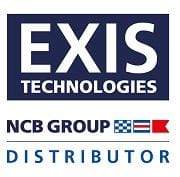The International Safety Management (ISM) Code 2014 edition  was released on June 23, 2014 by the International Maritime Organization. It replaces its 2010 version counterpart.
was released on June 23, 2014 by the International Maritime Organization. It replaces its 2010 version counterpart.
What's it for?
Since entry into force in 1998, the International Safety Management (ISM) Code's mission has been to address concerns over poor management standards and practices in shipping. To address these concerns, the ISM code objective is to provide an international standard for the safe management and operation of ships and for pollution prevention. The ISM Code evolved through the development of the Guidelines on management for the safe operation of ships and for pollution prevention (resolution A.647(16)). The Code, in its current form, was adopted by the Organization in 1993 and amended in 2000, 2004, 2005, 2008 and 2013.
What's Changed?
Consolidation of amendments
The 2014 edition of the ISM code consolidates the amendments from resolutions MSC.104(73),MSC.179(79),
MSC.195(80), MSC.273(85) which entered into force on 1 July 2002, on 1 July 2006, on 1 January 2009,
and on 1 July 2010, respectively, and resolution MSC.353(92) which enters into force on January 1st, 2015.
SOLAS chapter IX included
Chapter IX: Management for the safe operation of ships
Regulation 1: Definitions - Defines common words/phrases (ex. Company, Oil Tanker, Chemical Tanker, Gas Carrier, Bulk Carrier Mobile Offshore Drilling Unit, High-Speed Craft) that appear periodically with reference to the appropriate regulation(s).
Regulation 2: Application - Defines which ships are subject to SOLAS chapter IX based upon specific size, type, and construction date criteria.
Regualtion 3: Safety Management Requirements - Requires both the company and ship to treat the ISM Code as mandatory and be in compliance. The ship shall be operated by a company holding a document of compliance that is referred to in regulation 4.
Regulation 4: Certification - A "Document of Compliance" shall be issued to companies who comply with the requirements of the ISM Code. Copy of the Document of Compliance must be kept on board the ship for verification purposes. A certificate shall be called a "Safety Management Certificate" and administered to all ships a organization is operating. The organization responsible for operating the ship must verify the shipboard management personnel are in accordance with the approved safety management system before issuing the Safety Management Certificate.
Regulation 5: Maintenance of Conditions - States the safety management system shall be maintained in accordance with the provisions of the ISM Code.
Regulation 6: Verification and Control - States the administration, another contracting government at the request of the administration or an organization recognized by the administration shall periodically verify the proper functioning of the ship's safety management system. A ship required to hold a certificate issued pursuant to the provisions of regulation 4.3 shall be subject to control in accordance with the provisions of regulation XI/4. For this purpose such certificate shall be treated as a certificate issued under regulation I/12 or I/13.
New and revised guidelines
Resolution A.1071(28) changed sections 3, 6, 12, 14, and footnotes of the ISM code and revoked resolution A.1022(26) on July 1st, 2014. Since amendments were adopted to sections 3, 6, 12, 14, and footnotes the guidelines of the ISM code were modified to reflect the changes made to the respective sections. The following revised guidelines are:
-Revised Guidelines on the implementation of the International Safety Management (ISM) Code by Administrations (resolution A.1071(28)), adopted in December 2013.
-Revised Guidelines for the operational implementation of the International Safety Management (ISM) Code by companies (MSC-MEPC.7/Circ.8)
-Guidance on the qualifications, training and experience necessary for undertaking the role of the designated person under the provisions of the International Safety Management Code Guidance on near-miss reporting (MSC-MEPC.7/Circ.6)
-Guidance on near-miss reporting (MSC-MEPC.7/Circ.7)
Who should have the ISM code?
The ISM code 2014 edition is an essential reference for:
-maritime administrations
-ship owners and operators
-shipping companies
-training providers and education institutes
-shipbuilders
-engine and equipment manufacturers
-others with interest in ensuring safety at sea
Where you can find it?
The ISM Code 2014 edition is available to purchase here.








